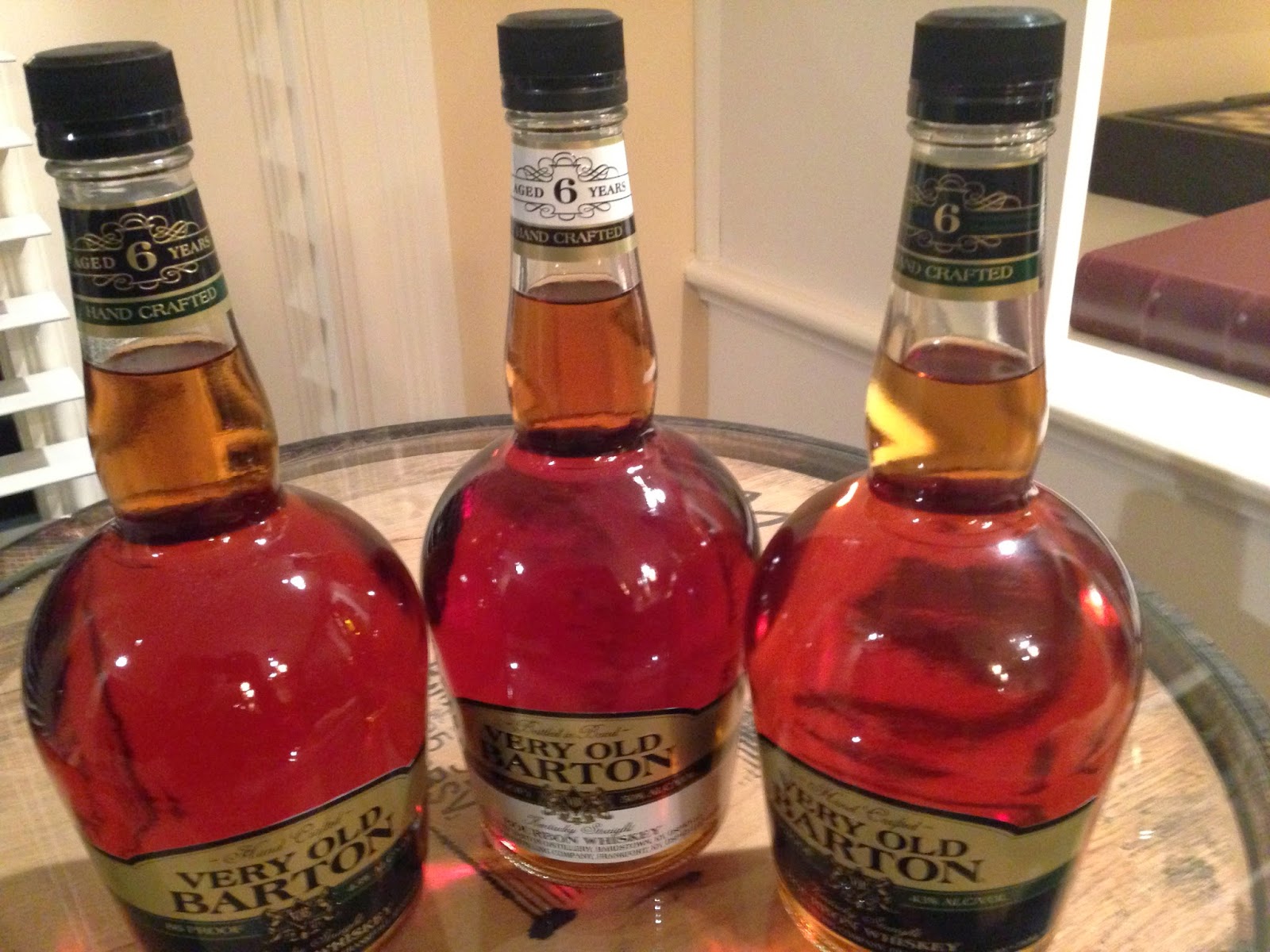Tax day hurts, so I’m hitting the
bottom shelf for this review. At least I
picked a brand that has gotten high praise despite its price, shelf placement
and limited distribution.
Very Old Barton – or “VOB” – is
distilled at the Barton 1792 Distillery, in Bardstown Kentucky (f/k/a the Tom
Moore Distillery). The VOB brand comes
in several different varieties, including an 80 proof, 86 proof, 90 proof and
100 proof Bottled in Bond. For the three
that I compared, both 86-proof versions cost $8.83 on sale (regular price $9.99)
and the BIB version cost $11.99. I
wanted to see if a bottle containing the age statement was distinguishable from
the NAS version, and whether either variety was materially different from the
BIB version.
Along with its praise, though, VOB
(and its owner, Sazerac, and its other distillery, Buffalo Trace) has received a
healthy dose of well-deserved criticism for how it removed the 6-year age
statement. See Sku's
Jan. 27, 2014 post -- "Sazerac's Funny Numbers" as one great
example. Removing an age statement is
one thing, but the necks of VOB continue to carry a deceptively prominent
numeral 6, just without the smallish font words “aged” and “years” on either
side.
Color:
Medium amber for all three.
Nose:
The nose has a little honey and fruit sweetness, with the
BIB version having more of the tell-tale smell of higher proof, but black
pepper and rye were the dominant scents for all three. Overall it’s a light nose. The nose of the BIB version held up better to
ice.
Taste:
VOB has even less sweetness than the nose might
indicate. It’s not a powerhouse, but the
rye and pepper spice has a nice bite, and it rounds out with toffee and corn
flavors, while still overall being dry.
There was a very slight medicinal quality too, which detracted from the
other flavors, but it went away with an ice cube (which also brought out some
of the fruit). These are very solid
classic bourbons.
Finish:
The finish was medium in length for each, with predominate
notes of black pepper and oak, and it was dryer than the taste. Ice gave the finish a sweeter taste for each.
Bottom Line:
Many people have sung the praises
of VOB as a hidden gem on the bottom shelf.
While I’m surprised at its cost, and while it no doubt is one of the top
“value bourbons,” I think that it doesn’t rank any higher than mid-shelf. I’d buy it over a few brands in the $20-$30
price range, but it can’t touch my favorites.
Every time that I had a favorable impression of the nose, taste or
finish, it followed in my mind with “for
the price.” Additionally, while the
86 proof 6-Year and NAS versions are virtually indistinguishable now, I suspect
that Sazerac won’t be able to keep up with the relative quality of the profile,
and upcoming releases will taste younger and less balanced. The 100 proof BIB version was only
distinguishable by the clearly higher alcohol content, and given the choice
between the two, I’d pick the 86 proof because I prefer it neat. If you prefer ice or a splash of water,
definitely go with the BIB version.
When you’re broke on tax day, or
for any other occasion where you’re looking to spend only $10.00, VOB probably
can’t be beat (which helps the score on the Sipp’n Corn Scale). If you’re looking for other great values for
just a few more dollars, try Old Grand-Dad BIB and Four Roses “Yellow Label.”
Scores on The
Sipp’n Corn Scale
Very Old Barton NAS: 2.5
Very Old Barton
6-Year: 3.0 (bonus points for
age statement)
Very Old Barton
6-Year BIB: 2.5
The Sipp’n Corn Scale:
1 – Wouldn’t
even accept a free drink of it.
2 – Would
gladly drink it if someone else was buying.
3 – Glad to
include this in my bar.
4 – Excellent
bourbon. Worth the price and I’m sure to
always have it in my bar.
5 – Wow. I’ll search high and low to get another
bottle of this.




